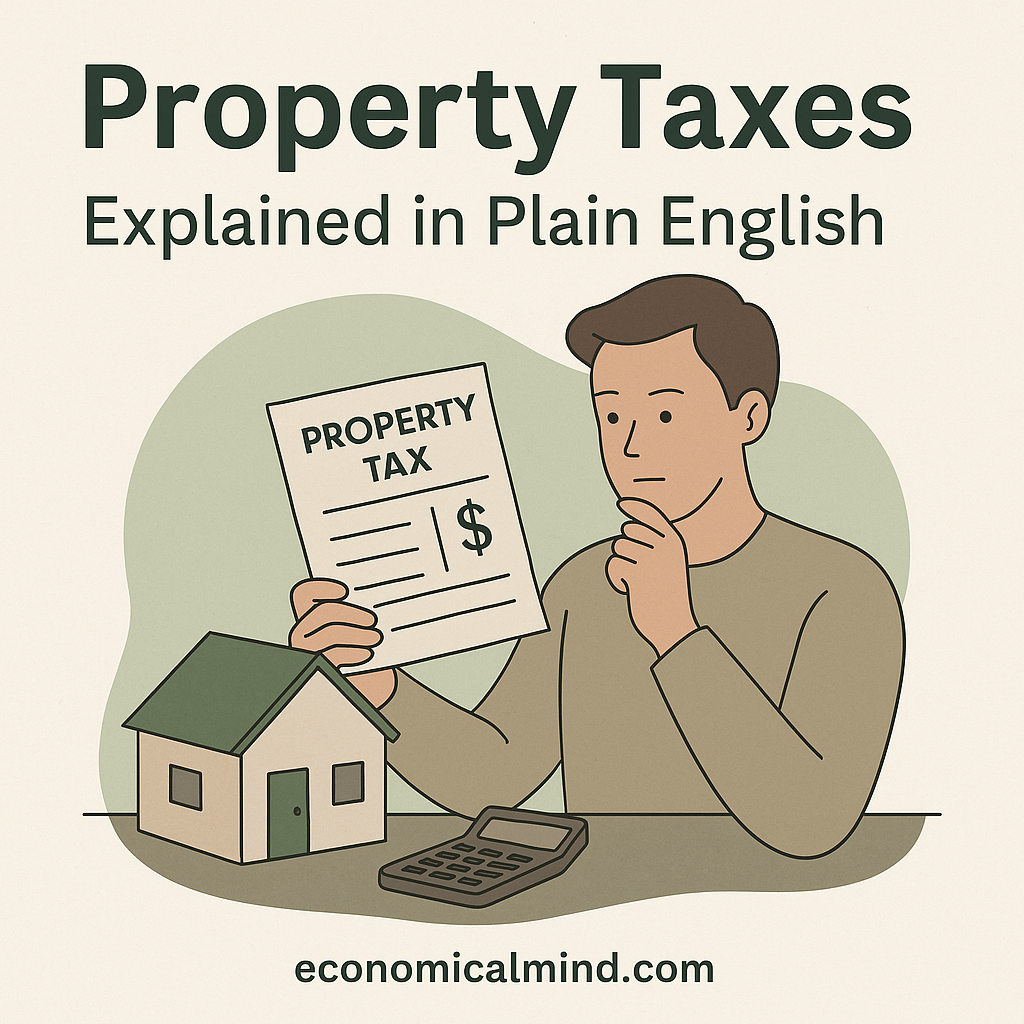
Owning a home comes with ongoing costs — and one of the biggest is property taxes. These taxes help fund schools, roads, fire departments, and other community services. While they’re unavoidable, understanding how they work can help you budget better and even find ways to lower your bill.
Here’s everything you need to know about property taxes — explained simply and clearly.
Step 1: What Property Taxes Are
Property taxes are annual fees homeowners pay to local governments based on the value of their property. This includes both the land and the home itself.
The money collected funds local infrastructure and services such as:
- Public schools
- Police and fire departments
- Parks and recreation
- Street maintenance and utilities
In other words, property taxes help keep your community running smoothly.
Step 2: How Property Taxes Are Calculated
Your property tax bill is based on two main factors:
- Your property’s assessed value
- The local tax rate (mill rate or levy)
Here’s the formula:
Property Tax = (Assessed Value ÷ 1000) × Tax Rate
For example, if your home is valued at $300,000 and your city’s tax rate is $20 per $1,000, your annual property tax would be:
300 × $20 = $6,000
Rates vary by location — even between nearby towns — so your neighbor in another zip code could pay a very different amount.
Step 3: Understand Property Assessments
Your local tax assessor determines your property’s assessed value, usually based on:
- Market value (what your home would sell for)
- Size, condition, and improvements
- Comparable property values in your area
Assessments are typically updated every one to three years. You’ll receive a property assessment notice from your local government showing how your home’s value was determined.
If you think your property was overvalued, you can appeal the assessment (more on that below).
Step 4: Know When and How to Pay
Most homeowners pay property taxes once or twice per year, though some states allow quarterly payments.
If you have a mortgage, your lender likely includes property taxes in your monthly escrow payment — meaning they collect money each month and pay the bill for you when it’s due.
If you own your home outright, you’ll receive a tax bill directly from your local tax office.
Step 5: How to Lower Your Property Taxes
There are a few legitimate ways to reduce your property tax burden:
- Review your assessment.
If your home’s assessed value seems too high, compare it to similar homes in your neighborhood. You can appeal if you find a clear discrepancy. - Apply for exemptions.
Many localities offer tax breaks for:- Senior citizens
- Veterans
- Disabled homeowners
- Primary residences (homestead exemptions)
- Avoid over-improving your home.
Major upgrades can raise your property’s value — and your tax bill. Balance renovations with resale value. - Stay informed.
Local tax rates can change yearly based on budgets and voter-approved measures. Stay updated through your city’s website or tax office.
Step 6: What Happens If You Don’t Pay
Failing to pay property taxes can have serious consequences.
Late payments often incur penalties and interest, and prolonged nonpayment can lead to a tax lien or even foreclosure.
If you’re struggling, contact your local tax office — many offer payment plans or hardship programs.
Bonus Tip: Property Taxes Are Tax-Deductible
Good news — if you itemize deductions on your federal tax return, you can usually deduct up to $10,000 in state and local taxes combined (including property taxes).
Check with a tax professional to see how this deduction applies to your situation.
Final Thoughts
Property taxes may not be exciting, but they’re essential to homeownership and local community funding.
By understanding how they’re calculated, budgeting ahead, and taking advantage of exemptions or appeals, you can stay in control of this recurring expense.
Knowledge is power — and in this case, it might even save you money.
